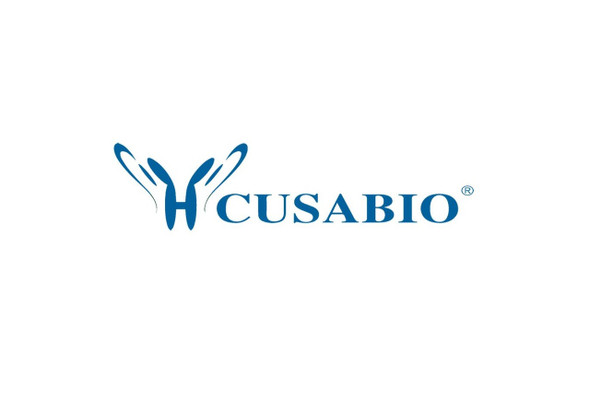Cusabio Human Recombinants
Recombinant Human 1-phosphatidylinositol 4, 5-bisphosphate phosphodiesterase zeta-1 (PLCZ1) | CSB-EP768240HU
- SKU:
- CSB-EP768240HU
- Availability:
- 13 - 23 Working Days
Description
Recombinant Human 1-phosphatidylinositol 4, 5-bisphosphate phosphodiesterase zeta-1 (PLCZ1) | CSB-EP768240HU | Cusabio
Alternative Name(s): Phosphoinositide phospholipase C-zeta-1;Phospholipase C-zeta-11
Gene Names: PLCZ1
Research Areas: Cancer
Organism: Homo sapiens (Human)
AA Sequence: MEMRWFLSKIQDDFRGGKINLEKTQRLLEKLDIRCSYIHVKQIFKTSDYPVVLSLENHCSTAQQEVMADNLQATFGESLLSDMLDDFPDTLPSPEALKFKILVKNKKIGTLKETHERKGSDKRGDNQDKETGVKKLPGVMLFKKKKTRKLKIALALSDLVIYTKAEKFKSFQHSRLYQQFNENNSIGETQARKLSKLRVHEFIFHTRKFITRIYPKATRADSSNFNPQEFWNIGCQMVALNFQTPGLPMDLQNGKFLDNGGSGYILKPHFLRESKSYFNPSNIKEGMPITLTIRLISGIQLPLTHSSSNKGDSLVIIEVFGVPNDQMKQQTRVIKKNAFSPRWNETFTFIIHVPELALIRFVVEGQGLIAGNEFLGQYTLPLLCMNKGYRRIPLFSRMGESLEPASLFVYVWYVR
Source: E.coli
Tag Info: N-terminal 6xHis-SUMO-tagged
Expression Region: 1-415aa
Sequence Info: Full length of Isoform 2
MW: 64.5 kDa
Purity: Greater than 90% as determined by SDS-PAGE.
Relevance: The production of the second messenger molecules diacylglycerol (DAG) and inositol 1,4,5-trisphosphate (IP3) is mediated by activated phosphatidylinositol-specific phospholipase C enzymes. In vitro, hydrolyzes PtdIns(4,5)P2 in a Ca2+-dependent manner. Triggers intracellular Ca2+ oscillations in oocytes solely during M phase and is involved in inducing oocyte activation and initiating bryonic development up to the blastocyst stage. Is therefore a strong candidate for the egg-activating soluble sperm factor that is transferred from the sperm into the egg cytoplasm following gamete mbrane fusion. May exert an inhibitory effect on phospholipase-C-coupled processes that depend on calcium ions and protein kinase C, including CFTR trafficking and function.
Reference: Phospholipase Czeta causes Ca2+ oscillations and parthenogenetic activation of human oocytes.Rogers N.T., Hobson E., Pickering S., Lai F.A., Braude P., Swann K.Reproduction 128:697-702(2004)
Storage: The shelf life is related to many factors, storage state, buffer ingredients, storage temperature and the stability of the protein itself. Generally, the shelf life of liquid form is 6 months at -20?/-80?. The shelf life of lyophilized form is 12 months at -20?/-80?.
Notes: Repeated freezing and thawing is not recommended. Store working aliquots at 4? for up to one week.
Function: The production of the second messenger molecules diacylglycerol (DAG) and inositol 1,4,5-trisphosphate (IP3) is mediated by activated phosphatidylinositol-specific phospholipase C enzymes. In vitro, hydrolyzes PtdIns(4,5)P2 in a Ca(2+)-dependent manner. Triggers intracellular Ca(2+) oscillations in oocytes solely during M phase and is involved in inducing oocyte activation and initiating embryonic development up to the blastocyst stage. Is therefore a strong candidate for the egg-activating soluble sperm factor that is transferred from the sperm into the egg cytoplasm following gamete membrane fusion. May exert an inhibitory effect on phospholipase-C-coupled processes that depend on calcium ions and protein kinase C, including CFTR trafficking and function.
Involvement in disease: Spermatogenic failure 17 (SPGF17)
Subcellular Location: Nucleus, Cytoplasm, perinuclear region
Protein Families:
Tissue Specificity: Expressed specifically in testis and sperm. Weakly expressed in pancreatic-duct cells. Up-regulated in pancreatic-duct cells from patients with cystic fibrosis.
Paythway: Calciumsignalingpathway
Form: Liquid or Lyophilized powder
Buffer: If the delivery form is liquid, the default storage buffer is Tris/PBS-based buffer, 5%-50% glycerol. If the delivery form is lyophilized powder, the buffer before lyophilization is Tris/PBS-based buffer, 6% Trehalose, pH 8.0.
Reconstitution: We recommend that this vial be briefly centrifuged prior to opening to bring the contents to the bottom. Please reconstitute protein in deionized sterile water to a concentration of 0.1-1.0 mg/mL.We recommend to add 5-50% of glycerol (final concentration) and aliquot for long-term storage at -20?/-80?. Our default final concentration of glycerol is 50%. Customers could use it as reference.
Uniprot ID: Q86YW0
HGNC Database Link: HGNC
UniGene Database Link: UniGene
KEGG Database Link: KEGG
STRING Database Link: STRING
OMIM Database Link: OMIM






